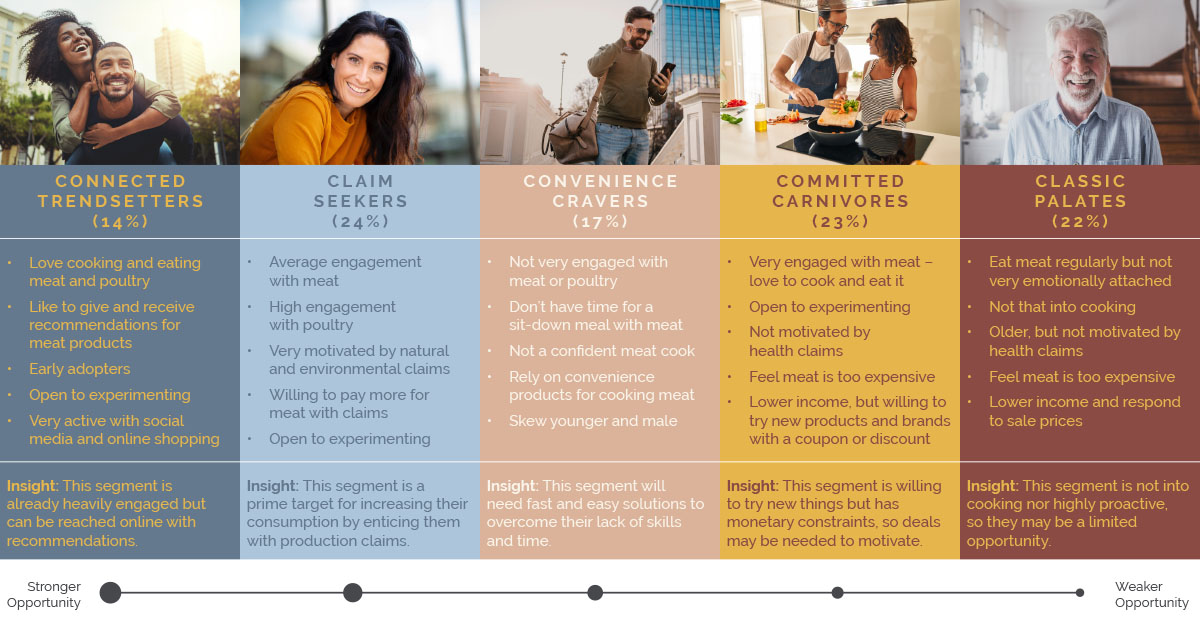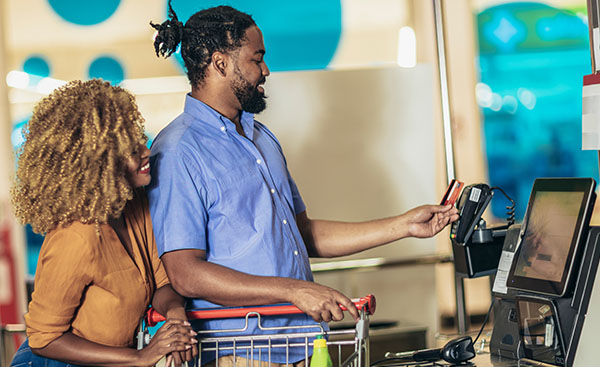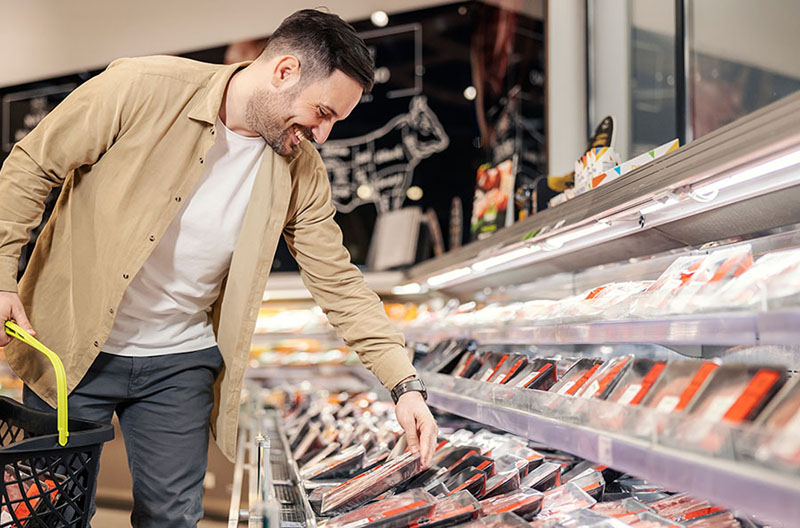Sponsored content

By Michael Uetz, managing principal, Midan Marketing
Earlier this year, Midan Marketing released our Meat Consumer Segmentation 3.0 research, giving a snapshot of today’s meat consumers. One way to get to know the five new segments is to understand how they each feel about three of the top drivers that have a growing impact on meat consumers: cost, quality and convenience.
Cost
Consumers today are still struggling with inflation – and it’s been going on so long, they’re not sure if it’s going up or down anymore. Unfortunately, even as inflation eases, many shoppers are struggling to make ends meet. More than half of meat consumers (56 percent) feel like meat is too expensive. This stat varied little as we considered the different segments. The Convenience Cravers – a segment defined by their preference for time-saving proteins – had the fewest who felt that way with only 52 percent of this cohort agreeing; conversely, 62 percent of Committed Carnivores (who generally just love meat) agreed. These numbers are all close in range, though, showing that across segments, meat feels expensive.

Even though the segments feel similarly about the price of meat, they approach it differently. About half (51 percent) of consumers say they will shop at different stores to get the best deal on meat – this number increases to 80 percent when talking about Connected Trendsetters. This segment is defined by their connection to one another and to brands, both online and offline. These consumers are some of the most likely to be shopping for meat products online, making price comparison easier for them.
When looking toward the next 12 months, 36 percent of meat consumers said they’d be seeking out less expensive cuts of meat than they normally purchase. This peaked with 64 percent of Connected Trendsetters and was the lowest among Classic Palates at 19 percent. Classic Palates are defined by their habits and aren’t likely to experiment with something new, even if it would save them money.
Quality
After price, quality is the number two purchase influencer for beef and pork. Forty-two percent of meat consumers say they purchase meat based on quality rather than price. This was higher among Connected Trendsetters (78 percent) and Claim Seekers (62 percent). Within the other three segments, only about a quarter of the consumers agreed they purchase meat based on quality rather than price.
Even those who value quality don’t all define it the same way. For example, Claim Seekers prioritize animal welfare, sustainability and other package claims as their defining feature.
With fresh beef, 71 percent of consumers say they’re aware of the USDA Prime designation. However, only 23 percent say they purchase Prime beef at least once per month. The segment with the largest percentage purchasing Prime beef is Connected Trendsetters, with 36 percent making these purchases, while only 10 percent of Classic Palates are splurging on the high-quality beef.
Midan’s past research shows that meat consumers don’t necessarily define quality the same way those inside the industry do. After the USDA quality grades for beef, consumers believe high-quality beef and pork are natural and raised without antibiotics or hormones. The importance of these claims also varies greatly between segments. For example, 90% of Claim Seekers look for meat without added hormones while only a quarter of Classic Palates make this a priority.

Convenience
A theme that grew in importance over the last few years is convenience. Busy consumers are finding it harder to get a balanced meal on the table every night. While it’s a small percentage, 16 percent of consumers say meat takes too long to cook for an everyday meal. More than half (51 percent) of Connected Trendsetters feel that way, though. Convenience can be about more than just time: Nearly a quarter (22 percent) of Convenience Cravers feel cooking meat perfectly is just too hard.
Luckily for these consumers, value added products like pre-seasoned and marinated meat are readily available at most retailers. Twenty-nine percent of consumers say any meat product that saves them time in the kitchen is worth paying more for – including 76 percent of Connected Trendsetters.

Retailers can also provide convenience for consumers. About 30 percent of consumers are interested in cashier-less shopping, 24 percent want to use a smart shopping cart at their store and 19 percent enjoy using QR codes on products to learn more information. Younger, experimental Connected Trendsetters have the highest interest in all these innovative convenience features while the older, more habitual Classic Palates are content without new technology to navigate.
When it comes to shopping for meat online through a website or app for pickup or delivery, over a third (37 percent) of consumers have taken advantage of this convenience option. Once again, the Connected Trendsetters (84 percent) and Convenience Cravers (49 percent) are most likely to be opting for all these services and Classic Palates (11 percent) are the least likely.
Consumers are constantly evolving and becoming more diverse. They will continue looking to retailers for convenient, affordable and quality proteins to meet their needs. To continue being the retailer of choice for today’s meat consumers, it will be critical to really understand what is driving their purchases at the meat case.
Source: Midan Marketing, Meat Consumer Segmentation 3.0, August 2023.
Read more meat news from The Shelby Report.

